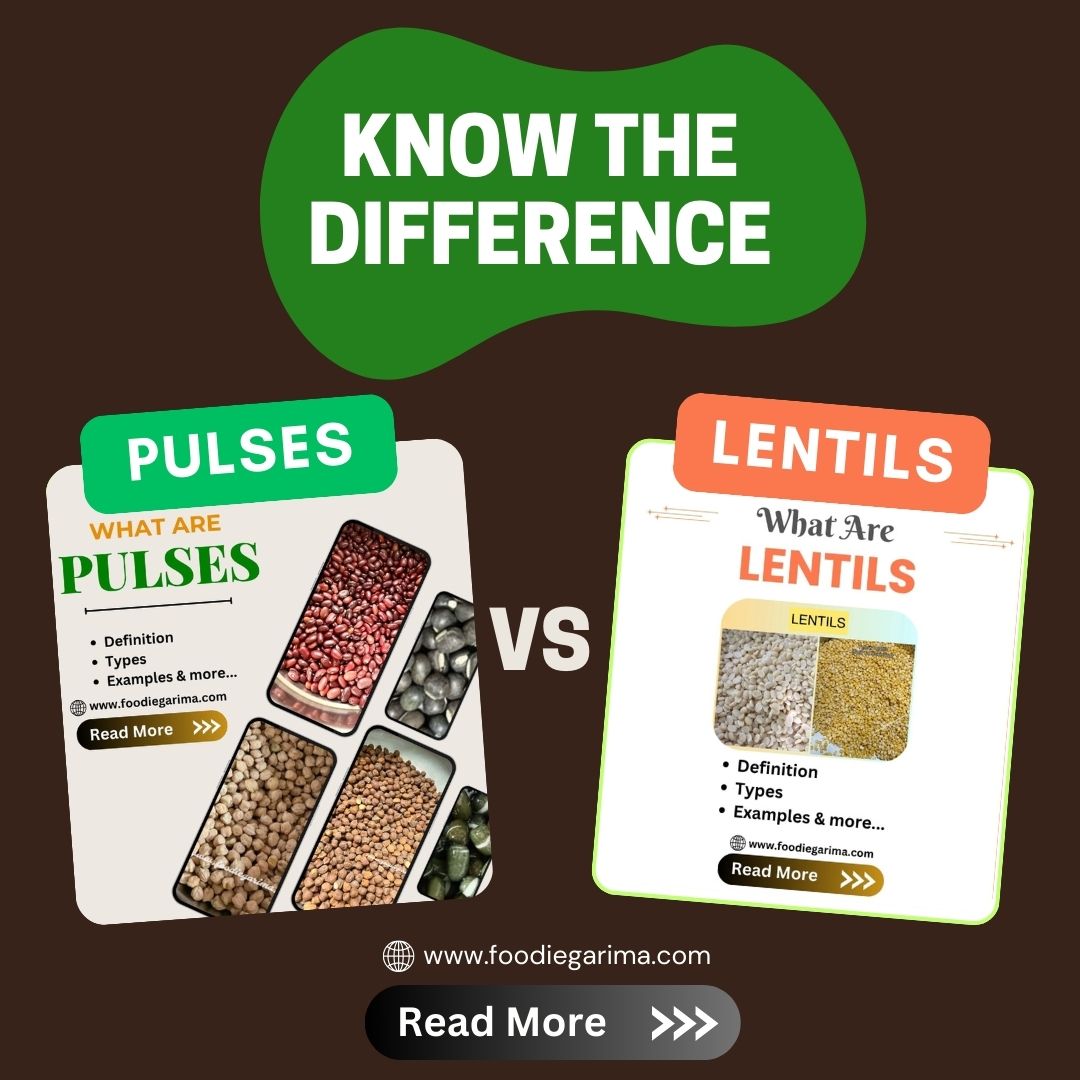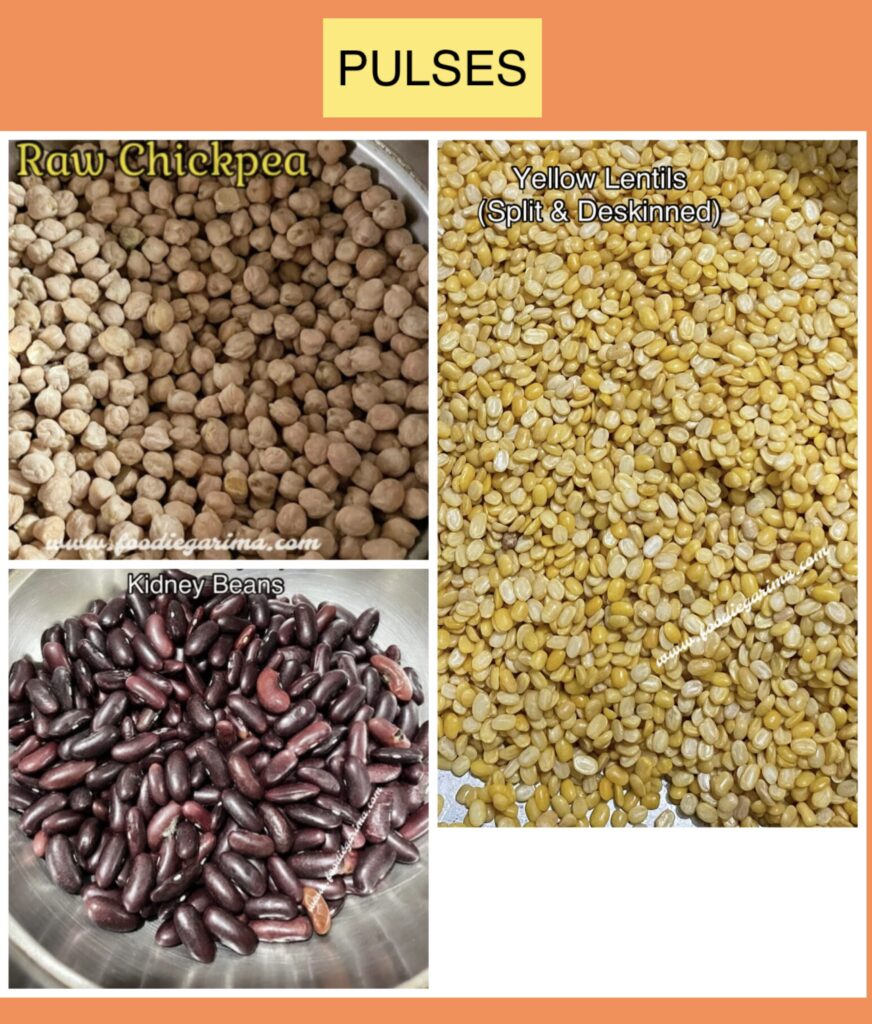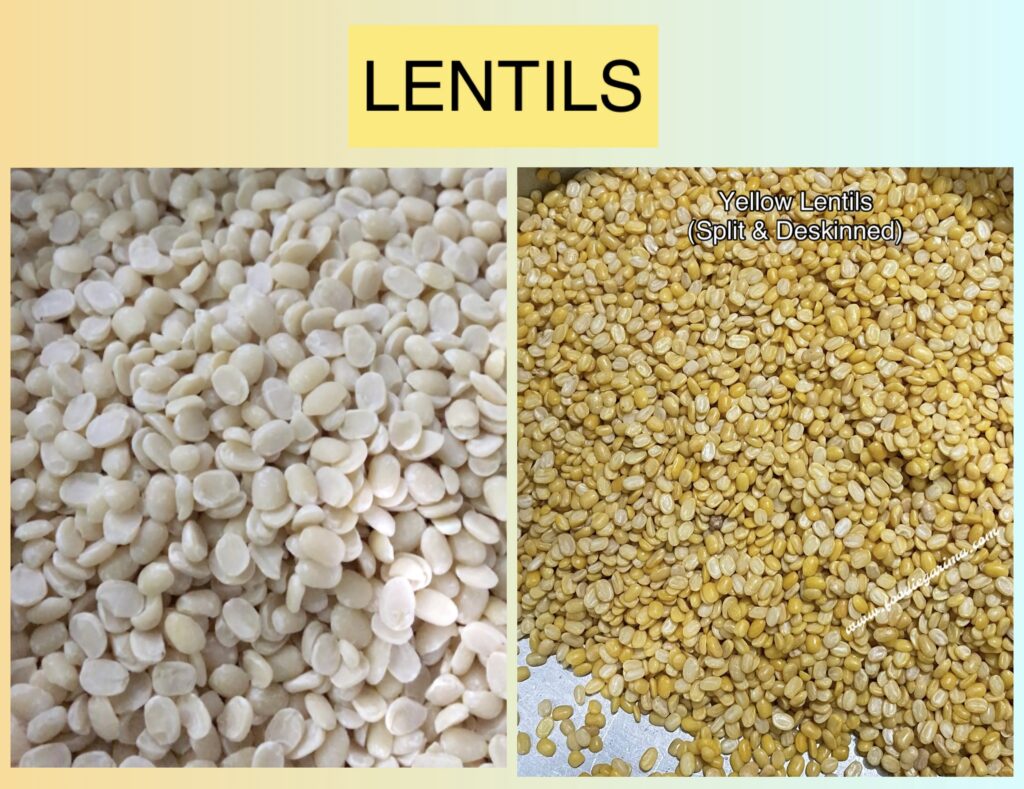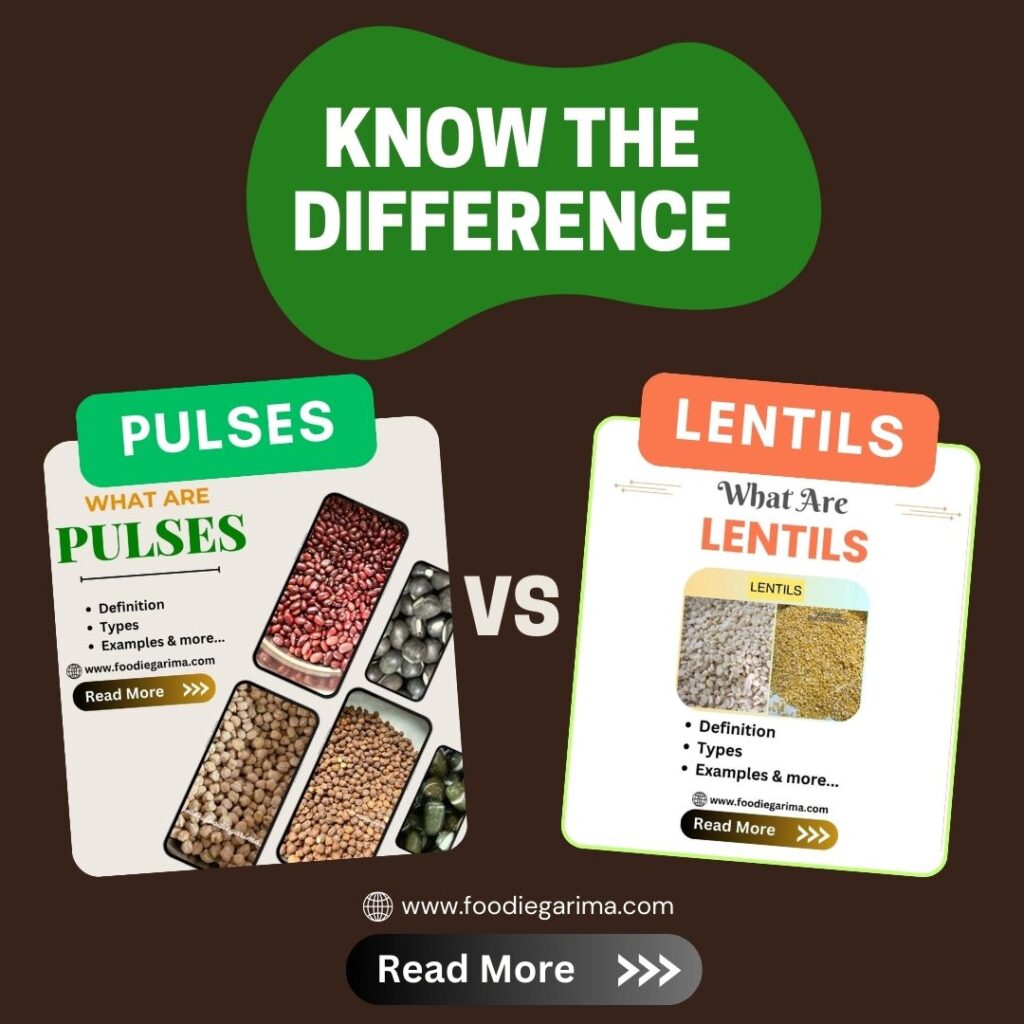6 January, 2025
Pulses vs Lentils | Know the Differences

Pulses vs Lentils: Key Differences and How to Use Them
Pulses and Lentils are often used interchangeably in conversations about nutrition and cooking, but they have distinct differences. Understanding these differences can help you make better choices in your diet and culinary adventures. Let’s explore the unique characteristics of Pulses and Lentils and how they contribute to a balanced diet.
What Are Pulses and Lentils?
Pulses: Pulses are a subgroup of Legumes. They refer specifically to the dried seeds of Legume plants, which include Beans, Lentils, and Chickpeas.
Lentils: Lentils are a specific type of Pulse. They are small, lens-shaped seeds that come in a variety of colors, including Red, Green, Brown, Yellow, and Black.


Key Differences Between Pulses and Lentils
1. Definition
- Pulses: A broader category encompassing all dried Legume seeds, including Beans, Chickpeas, Peas, and Lentils.
- Lentils: A specific type of Pulse, distinct for their shape, size, and nutritional profile.
2. Variety
- Pulses: Includes a wide variety of legumes such as Kidney Beans, Black-eyed Peas, and Chickpeas.
- Lentils: Limited to lentil varieties like Red, Green, Brown, Yellow, and Black Lentils.
3. Nutritional Composition
- Pulses:
- High in protein and fiber.
- Vary significantly in nutrient content depending on the type (e.g., chickpeas are high in folate, while beans are rich in iron).
- Lentils:
- Consistently high in protein, fiber, iron, and folate.
- Typically lower in fat compared to some other pulses.
4. Cooking Time
- Pulses:
- Often require soaking overnight and longer cooking times (e.g., chickpeas and kidney beans).
- Lentils:
- Do not need soaking and cook quickly, usually within 15-30 minutes.
5. Culinary Uses
- Pulses:
- Common in stews, curries, salads, and dips.
- Examples: Hummus (made from chickpeas) and baked beans.
- Lentils:
- Used in soups, dals, salads, and as a thickening agent in recipes.
- Examples: Lentil soup and Indian dal.
How to Choose Between Pulses and Lentils
- Time Available for Cooking:
- Choose lentils for quick meals.
- Opt for pulses when you have time for soaking and slow cooking.
- Desired Texture:
- Use pulses like chickpeas for firm and creamy textures.
- Pick lentils for softer, mushy textures.
- Nutritional Goals:
- Lentils are excellent for iron and folate.
- Pulses offer a broader range of nutrients depending on the type.
- Dish Type:
- Pulses work well in hearty stews and salads.
- Lentils shine in soups, curries, and as a base for vegetarian patties.
For recipes, cluick here https://foodiegarima.com/blog-3/
Popular Recipes with Pulses and Lentils
Pulses:
- Hummus (chickpeas)
- Curry (kidney beans)
- Split Pea Soup (green peas)
Lentils:
- Red Lentil Curry
- Lentil and Spinach Salad
- Lentil Shepherd’s Pie
Health Benefits of Pulses and Lentils
Pulses:
- Heart Health: Rich in fiber and low in cholesterol, pulses support cardiovascular health.
- Blood Sugar Control: Low glycemic index helps stabilize blood sugar levels.
- Energy Boost: Packed with complex carbohydrates for sustained energy.
Lentils:
- Iron and Folate: Essential for blood health and preventing anemia.
- Weight Management: High protein and fiber content promote satiety.
- Digestive Health: Fiber aids in maintaining a healthy gut microbiome.
While Pulses and Lentils belong to the same Legume family, their differences in variety, cooking time, and nutritional content make them unique. Incorporating both into your diet can provide diverse flavors, textures, and health benefits. Whether you’re making a rich chickpea curry or a quick lentil soup, these legumes are nutritious, sustainable, and versatile staples for any kitchen.
FAQs
1. Are all lentils pulses?
Yes, all lentils are pulses, but not all pulses are lentils.
2. Do pulses and lentils require soaking?
Most pulses need soaking, while lentils generally do not.
3. Which is healthier: pulses or lentils?
Both are healthy, but lentils are lower in calories and cook faster, making them convenient.
4. Can I substitute lentils for pulses in recipes?
It depends on the recipe. Lentils can substitute pulses in soups and curries but may alter the texture.
5. Are pulses and lentils suitable for a vegan diet?
Absolutely! Both are excellent plant-based sources of protein and other essential nutrients.
